Maps of Lviv (Lemberg), Galicia, and the Austro-Hungarian Empire
Click on any map to enlarge it. When the map opens in a new tab, you can usually click the image one more time to zoom in even further and see more details.
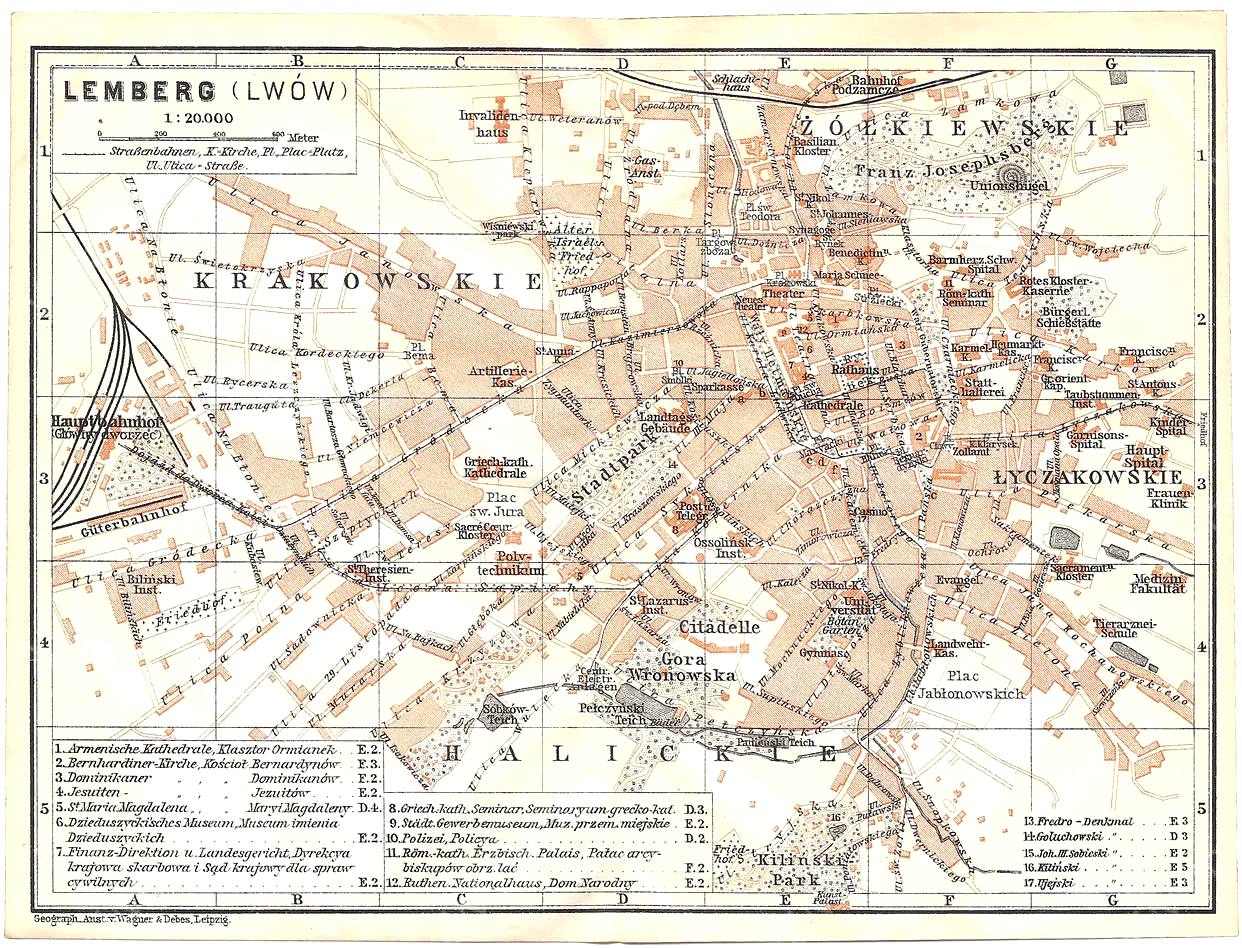
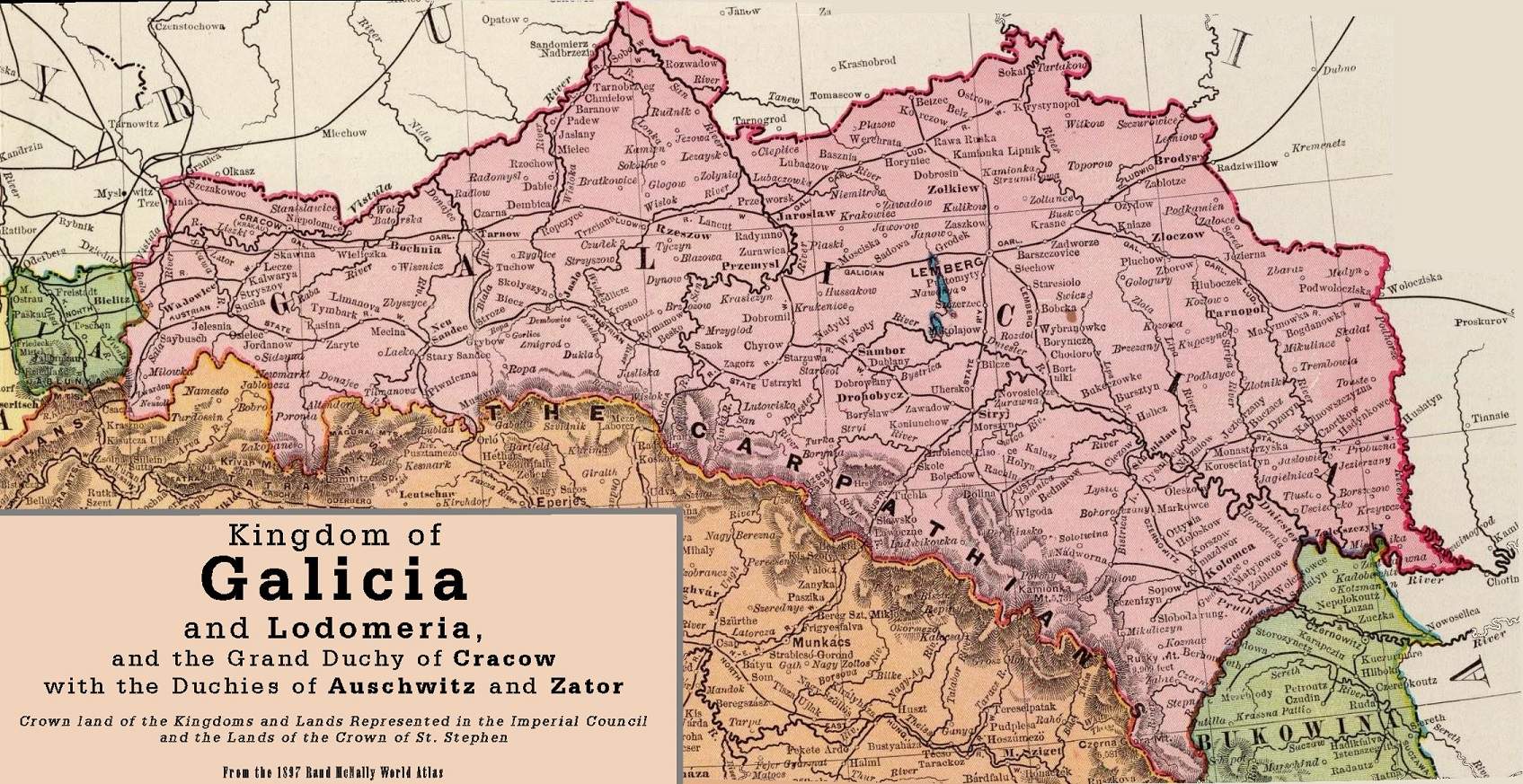
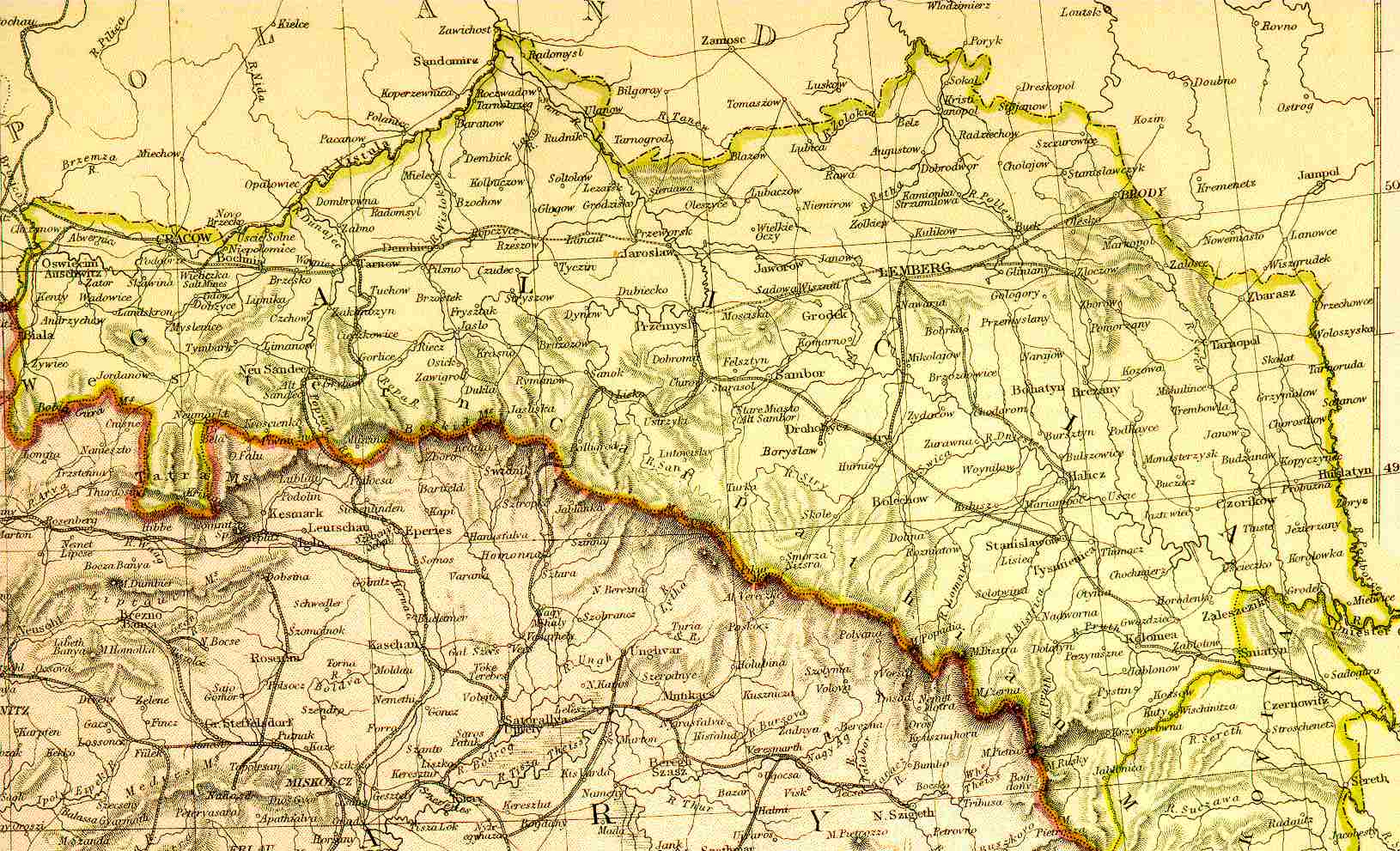
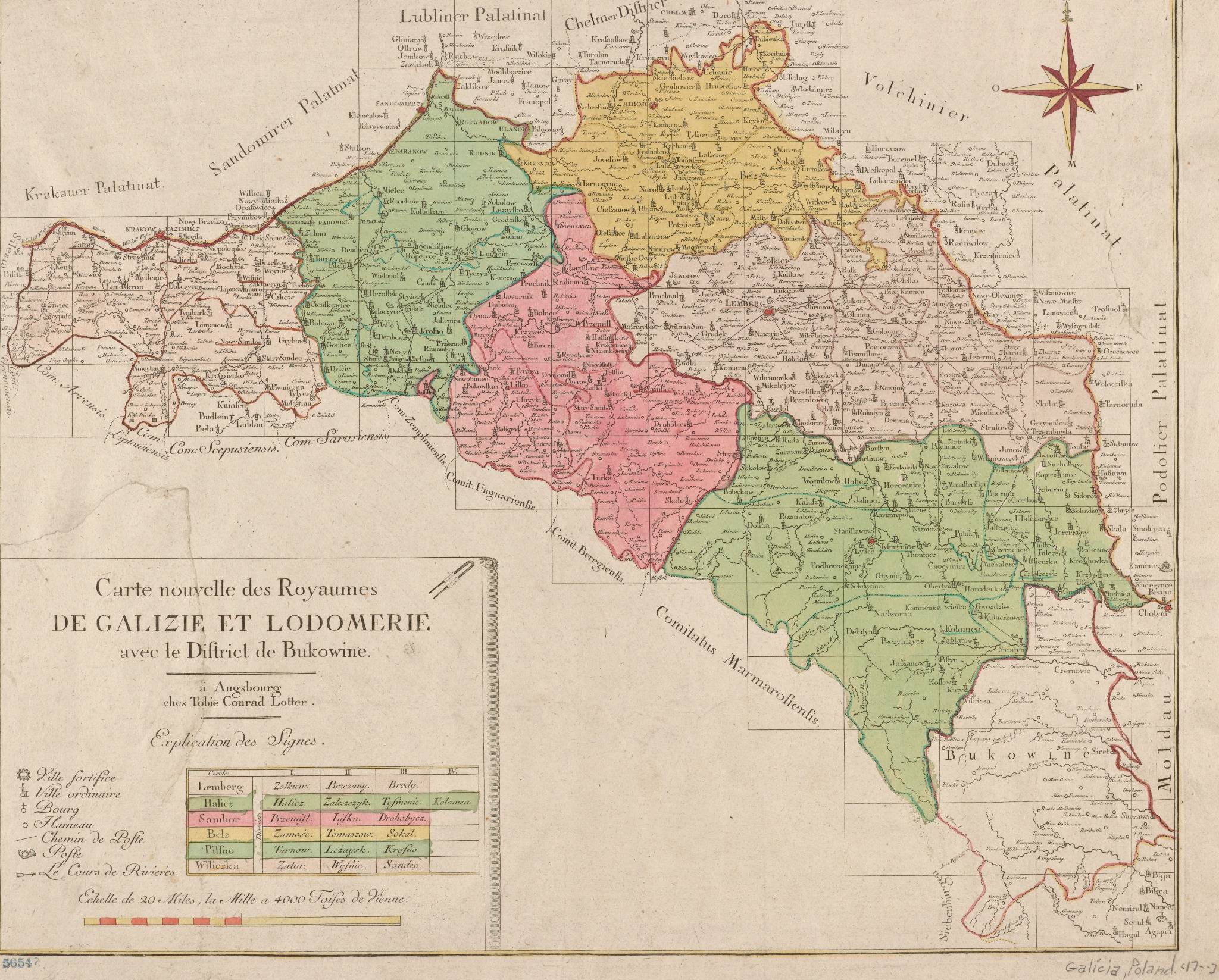

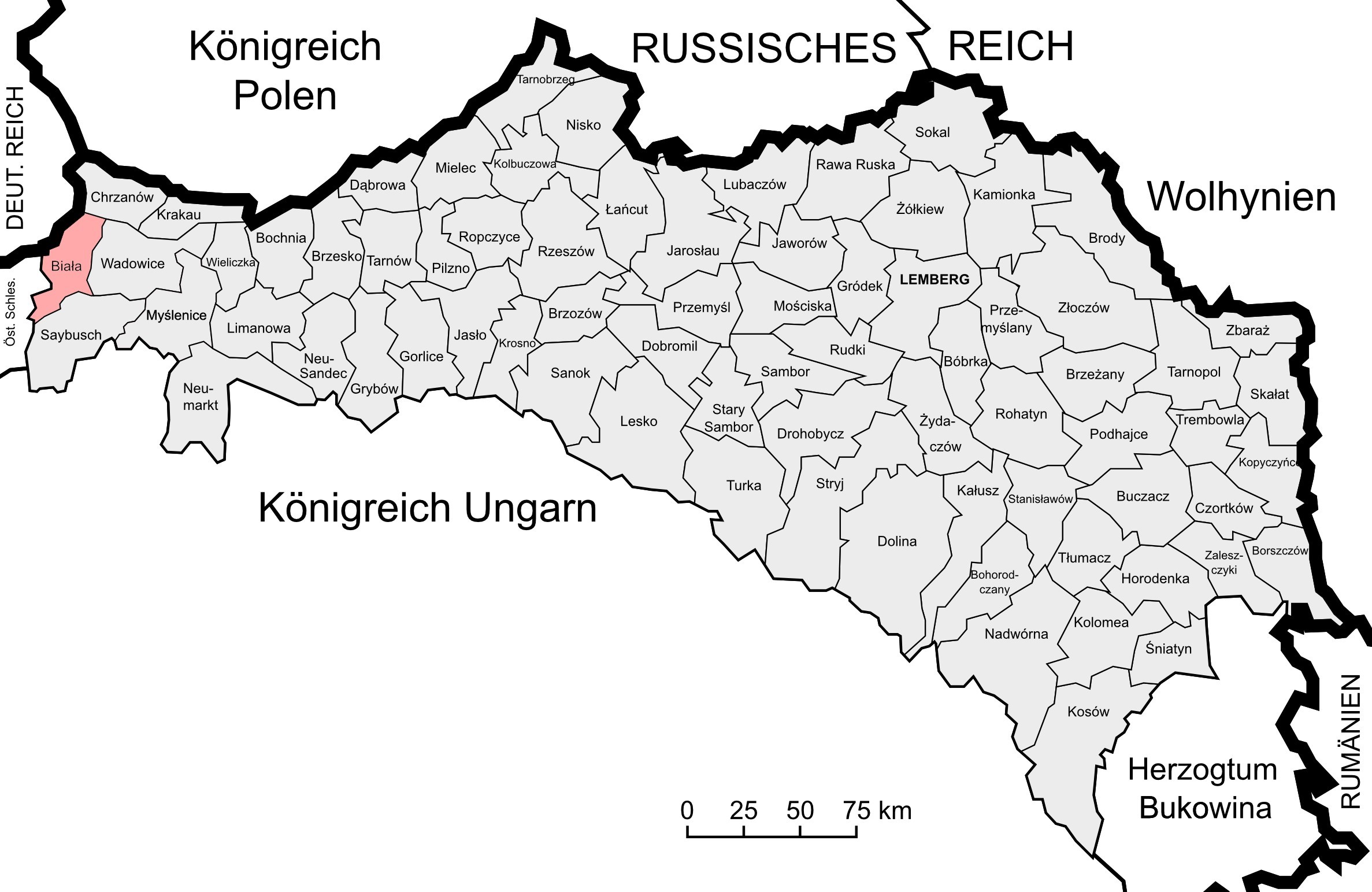
How “Lemberg / Lviv District” was referred to in different languages: This table shows the names used for the Lviv administrative district in official documents and daily speech during the Austro-Hungarian era. Note that the Ukrainian/Ruthenian name changed as the language evolved.
| Language | District Name Example | Pronunciation / Notes |
|---|---|---|
| German (official Austrian) |
Bezirk Lemberg | Beh-tsirk Lem-berg |
| Polish | Powiat Lwowski | Pov-yat Lvov-ski |
| Ukrainian / Ruthenian |
Львовскій повіт
(Lvovskiy povit, pre-1900s) Львівський повіт (Lvivskyi povit, 20th c. and modern) |
Early records: Lvovskiy povit Modern: Lvivskyi povit |
| Yiddish | לעמבערגער פאוויאט (Lemberger powyat) |
Borrowed from Polish, used in Jewish records |
How “Stanislau / Ivano-Frankivsk District” was referred to in different languages: This table summarizes the terms used for the Stanislau (now Ivano-Frankivsk) administrative district, with historical and modern spellings for Ukrainian/Ruthenian.
| Language | District Name Example | Pronunciation / Notes |
|---|---|---|
| German (official Austrian) |
Bezirk Stanislau | Beh-tsirk Stan-is-lau |
| Polish | Powiat Stanisławowski | Pov-yat Stanislav-ovski |
| Ukrainian / Ruthenian |
Станиславівскій повіт
(Stanyslavivskiy povit, pre-1900s) Станиславівський повіт (Stanyslavivskyi povit, 20th c. and modern) |
Early records: Stanyslavivskiy povit Modern: Stanyslavivskyi povit |
| Yiddish | סטאַניסלאווער פאוויאט (Stanislawer powyat) |
Borrowed from Polish, used in Jewish records |